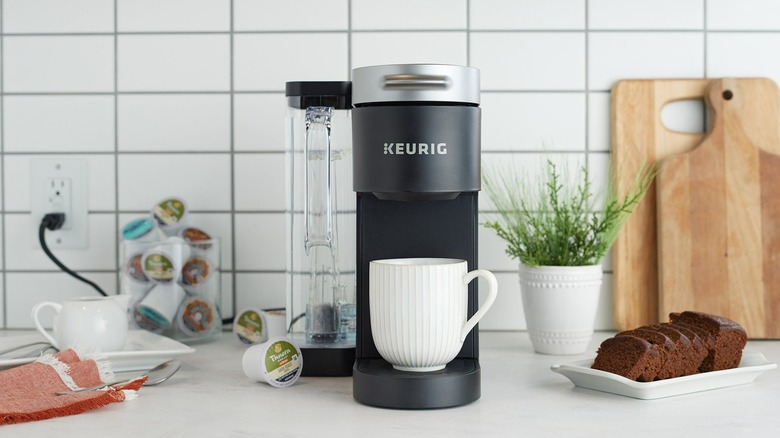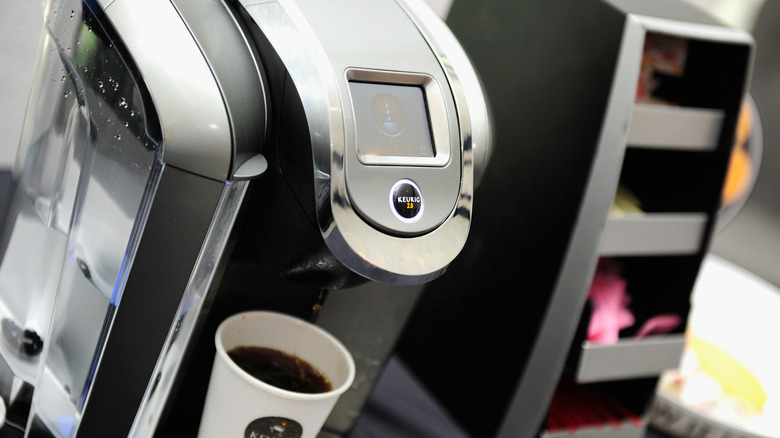How To Unclog And Clean Keurig Needles
Although the Keurig's needles are essential to holding and puncturing coffee pods, these small parts can be finicky. Within just a week of regular use (or perhaps sooner if you're a fan of the double pod hack), Keurig needles can become clogged, causing issues like the appliance sputtering, incomplete brewing, or no coffee being produced at all. Of course, you can remedy the problem by properly cleaning the needles.
To start, you should make sure the appliance is turned off and unplugged. You'll need to remove the pod holder to access the needles; this is as simple as lifting the handle as if to insert a pod, and then pushing the K-cup holder upward. Next, remove the lower funnel portion from the pod holder, exposing the exit needle. You can use either a clean straightened paper clip or a toothpick to unclog the needle, following with a rinse to dislodge any remaining coffee debris. Be careful not to cut yourself on the needle's point.
Accessing the entrance needle is simpler, as it sits in the cap of the pod holder. You can again use a paper clip or toothpick to clean in and around the needle, but note that this needle is much sharper than the previous one. Because the entrance needle is also built into the cap, you cannot (and should not try to) rinse it. No worries -– it'll get rinsed during your water-only brew cycles.
Follow up manual Keurig needle-cleaning with brewing
Once you've cleaned the debris from your Keurig needles and returned all parts to their places, you're ready for the final step: a few rinse cycles. You should run at least two water-only brewing cycles with the largest cup setting to rinse out whatever debris remains in the system, but you can run additional cycles if you're still seeing loose coffee grounds coming out with the water.
You may also choose to run rinse cycles -– with or without specialized cleaning pods -– more frequently to help the inner portion of the appliance stay clean longer. Doing so immediately after brewing a cup of coffee, for instance, can clean out debris before it has time to dry and really stick. Nevertheless, you should still clean your Keurig once a week and descale every three to six months to keep it in optimal condition. After all, brewing coffee in a dirty machine is a mistake that'll leave you with less-than-perfect espresso, and we won't stand for it.


